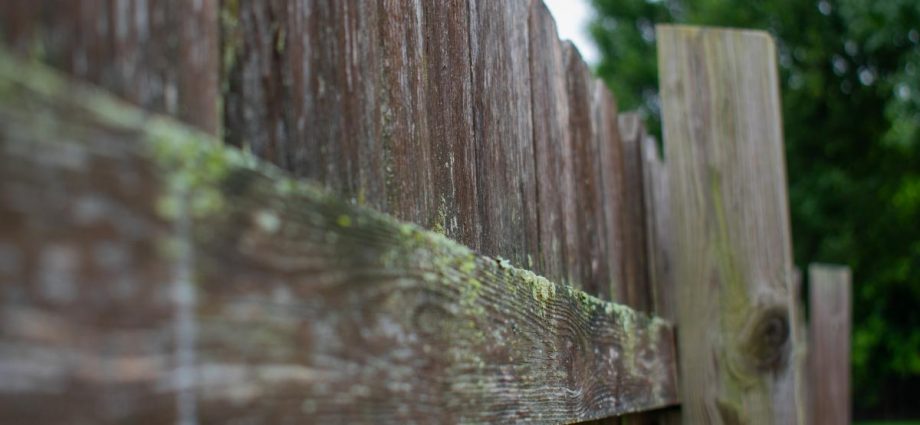Painting over them is a great way to cover them up and spruce up your garden, too.
However, following some important steps, such as cleaning the algae off before painting, is important so that it doesn’t reappear.
Experts at East Coast Fencing have shared how you can easily keep algae away using a simple cleaning solution.
- Mix one part white vinegar and one part warm water in a container such as a bucket or garden sprayer.
- Apply a generous amount of the solution onto your fence and ensure the algae is completely drenched.
- Leave the solution to sit on the fence for 15 minutes, and make not to try this on a rainy day otherwise, it can be washed away.
- After the time is up, use a stiff brush to easily scrub away the algae from the fence until it is completely clean, then rinse the fence with clean water to remove any algae remnants.
What happens if I just paint over algae?
Just painting over algae is not a permanent solution as it will more than likely come back at a later date.
Paint covers the visible algae but doesn’t kill the spores, experts say.
Algae can thrive even under paint, especially if moisture is trapped. Painting over algae can also lead to an uneven finish and paint failure.
If not treated correctly, then algae can cause wood rot, reducing the fence’s lifespan.
How can I prevent algae from forming on my fence?
Green mould or algae on a garden fence is caused by lack of sunlight, cool air and poor air circulation.
“It is prevalent on north-facing fences which don’t get much sunlight,” explains Angela Slater, gardening expert at Hayes Garden World told Homebuilding & Renovating.
“If you have climbing fence plants it is inevitable that you will get algae.
Recommended reading:
“Shade from trees will also encourage the formation of moulds. The only way to prevent algae is to allow sunlight to hit the fence by removing any climbing plants and anything which casts a shade over the fence.”
Unfortunately, Angela explains that a north-facing fence or one down a narrow passage or side return which doesn’t get any sunlight, it will be nearly impossible to prevent the formation of mould.
What are some of the signs of algae on my fence?
- Green, slimy, or fuzzy texture that grows on the wood.
- Algae can appear as green, black, or brown patches on the fence.
- Musty or damp smell: If the fence is affected by algae or mould, you might notice a musty or damp smell.
Pressure washing can be a good way to remove green from fence panels that is proving stubborn to shift – just make sure you start on a lower pressure not to cause damage to certain areas.




Puraburn I very delighted to find this internet site on bing, just what I was searching for as well saved to fav